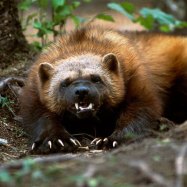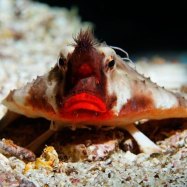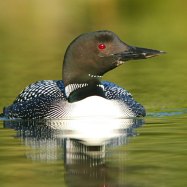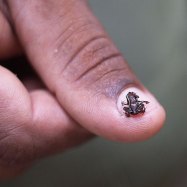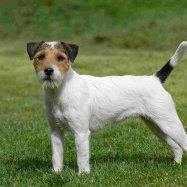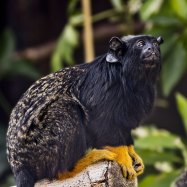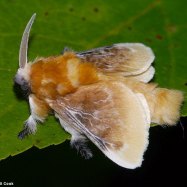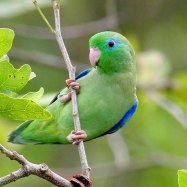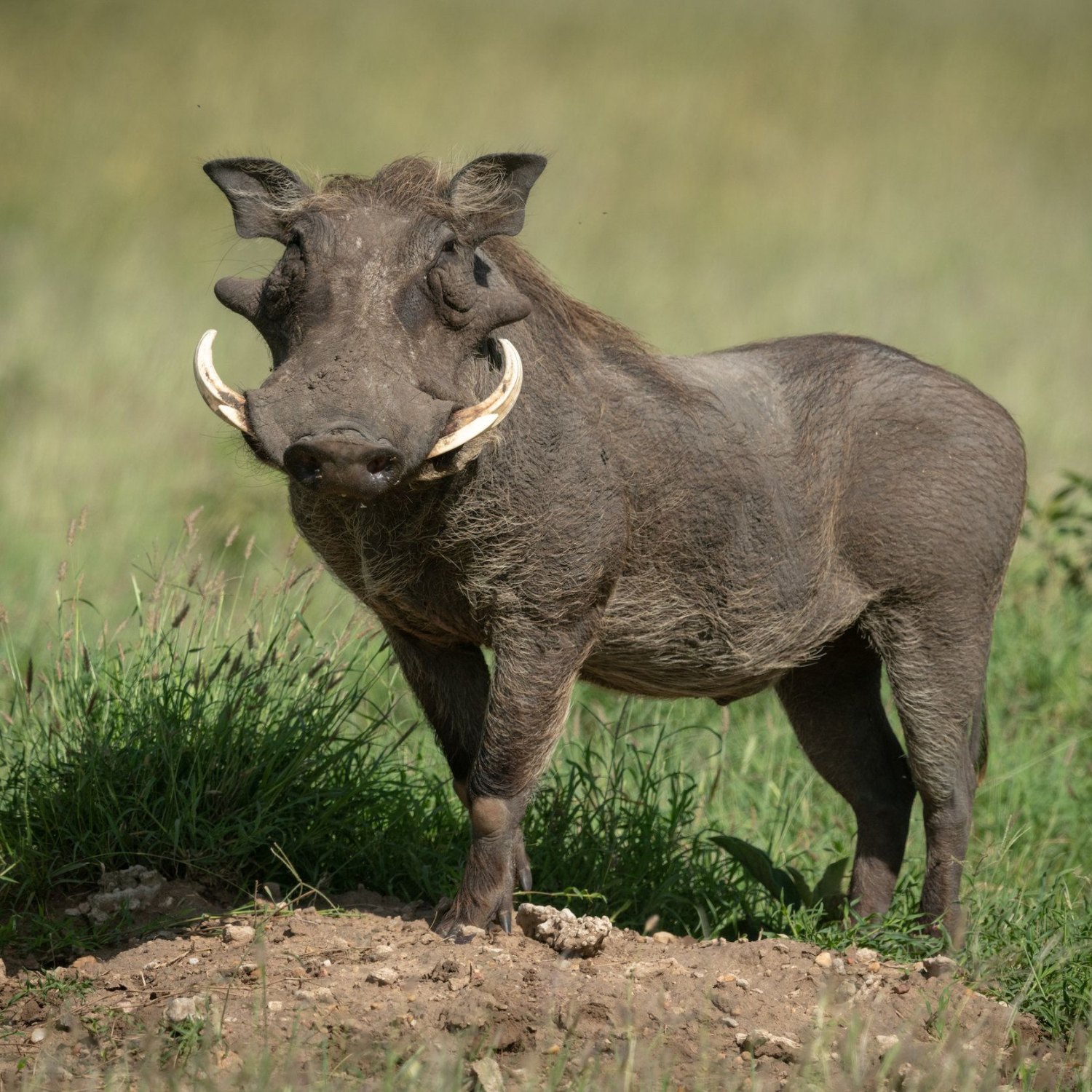
Warthog
90 to 150 centimeters
The warthog, found in Africa, is a sturdy mammal belonging to the Suidae family. Known for their distinctive tusks and barrel-shaped body, warthogs can grow up to 90-150 cm in length. These fascinating creatures have a unique appearance and play an important role in the African ecosystem. #WildlifeWednesday #AfricanSafari
Animal Details Summary:
Common Name: Warthog
Kingdom: Animalia
Habitat: Savannahs, grasslands, and woodland areas
The Fascinating World of Warthogs: The Majestic Beauties of the African Savannas
From the expansive grasslands to the dense woodlands of Africa, there is one animal that has captured the imagination of people across the globe – the warthog. With their unique appearance and interesting behaviors, they have become an iconic figure in African wildlife. These charismatic animals are more than just the beloved characters in popular children's books, they are fascinating creatures that have much to offer in terms of their biology, ecology, and importance in the ecosystem. In this article, we will delve into the world of warthogs and discover what makes them such a beloved and intriguing animal Warthog.The warthog, also known by its scientific name Phacochoerus africanus, is a member of the Suidae family, which includes pigs, hogs, and boars. They are one of the largest species of pigs, with adults reaching a height of up to 75 centimeters at the shoulder and weighing between 50 to 150 kilograms. They have a stocky and barrel-shaped body, with four sturdy legs that are perfect for traversing the varied terrain of their habitat. Their most striking feature is their two pairs of tusks, which can grow up to 60 centimeters long and are used for defense and root digging.
Warthogs are native to sub-Saharan Africa and can be found in various countries in the region, including Kenya, Tanzania, South Africa, and Namibia. Within their range, they inhabit a variety of habitats, including savannahs, grasslands, and woodland areas. They are adaptable animals and can thrive in both open areas and more wooded areas, as long as there is ample access to water and food.
These herbivorous animals mainly feed on grasses, roots, tubers, fruits, and seeds. They are not very picky eaters and will consume a wide range of plant matter, making them an important component of their ecosystem White Crowned Sparrow. As they forage for food, they also help maintain the balance of vegetation, preventing overgrowth that could harm other species.
Their Unique Adaptations
In order to survive in their challenging environment, warthogs have evolved various adaptations that help them thrive. One of their most notable adaptations is their tough, leathery skin, which is covered in sparse bristles. This acts as a protective armor against the thorns and sharp vegetation in their habitat, and also helps regulate their body temperature in the hot African sun.Another fascinating adaptation of these animals is their unique dental structure. Unlike other pigs who have flat molars for grinding, warthogs have pointed upper and lower molars that work like scissors, allowing them to easily cut through tough vegetation. This adaptation makes their diet of tough plants more manageable and ensures they get the nutrition they need to survive.
Life in the African Savanna
Warthogs are social animals and live in small groups known as sounders. These groups can consist of anywhere from 2 to 20 individuals, with a dominant male at the helm. Females, called sows, are the primary caregivers for the young, while males, called boars, serve as protectors. They communicate with a series of vocalizations that range from grunts, snorts, and squeals to warn others of danger and maintain their complex social structures.In the wild, warthogs are known for their impressive running speed, reaching up to 48 kilometers per hour. This comes in handy when they are threatened by predators, such as lions, cheetahs, and hyenas. Their speed, coupled with their sharp tusks and strong defense instincts, make them a formidable opponent for any predator.
The Mystique behind Their Unusual Appearance
With their grayish-brown or blackish coloration, wart-like bumps on their faces, and long curved tusks, warthogs may not be considered the most attractive animals at first glance. However, their unique appearance plays an essential role in their survival. Their course bristles act as a form of camouflage, allowing them to blend into their surroundings and avoid predators. The bumps on their faces, known as warts, are actually made up of a cartilaginous tissue and serve to protect their eyes during fights for dominance within the group.One particular feature that sets warthogs apart from other pigs is their large, prominent facial warts. These warts can reach up to the size of a golf ball and are more developed in males than females. These facial warts are thought to play a role in communication and dominance in group dynamics, as well as providing protection during physical altercations.
The Importance of Warthogs in the Ecosystem
Aside from their unique physical characteristics and behaviors, warthogs are a vital component of the ecosystem in which they live. These animals play a critical role in seed dispersal, as they consume a variety of plants and fruits and deposit the seeds in their feces in different locations. This helps with the dispersal of plants and ensures the natural balance of their environment.Warthogs are also considered a prey species, providing sustenance to many predators in their habitat. They are often hunted by lions, hyenas, and leopards, and their carcasses serve as a source of food for many scavengers, such as vultures and jackals. Without warthogs in their natural habitats, the balance of the ecosystem would be disrupted, and other species would be greatly affected.
Conservation Concerns
Despite their adaptable nature, warthogs are facing increasing threats to their survival. Habitat loss due to human activity, including agriculture and urbanization, is a significant concern for these animals. They are also hunted for their meat and their tough skin, which is used for leather. As a result, their populations are declining in some areas, and they have become a vulnerable species in some regions.Fortunately, conservation efforts are being made to protect these animals and their habitats. National parks and reserves have been established to safeguard warthogs and other wildlife, and education and awareness programs are being implemented to promote their conservation. With these efforts, it is hoped that warthogs can continue to thrive in their native habitats for generations to come.
A World of Warthogs
The world of warthogs is a unique and fascinating one. With their tough exterior, complex social structures, and adaptability, they have earned their place as beloved icons of African wildlife. These majestic beauties continue to captivate people of all ages and serve as a reminder of the beauty and diversity of our natural world. Next time you come across a warthog, take a moment to appreciate the intricacies of this incredible animal, and the important role they play in maintaining the balance of their ecosystem.

Warthog
Animal Details Warthog - Scientific Name: Phacochoerus africanus
- Category: Animals W
- Scientific Name: Phacochoerus africanus
- Common Name: Warthog
- Kingdom: Animalia
- Phylum: Chordata
- Class: Mammalia
- Order: Artiodactyla
- Family: Suidae
- Habitat: Savannahs, grasslands, and woodland areas
- Feeding Method: Herbivorous
- Geographical Distribution: Sub-Saharan Africa
- Country of Origin: Various countries in Africa
- Location: Africa
- Animal Coloration: Grayish-brown or blackish in color
- Body Shape: Stocky and barrel-shaped
- Length: 90 to 150 centimeters
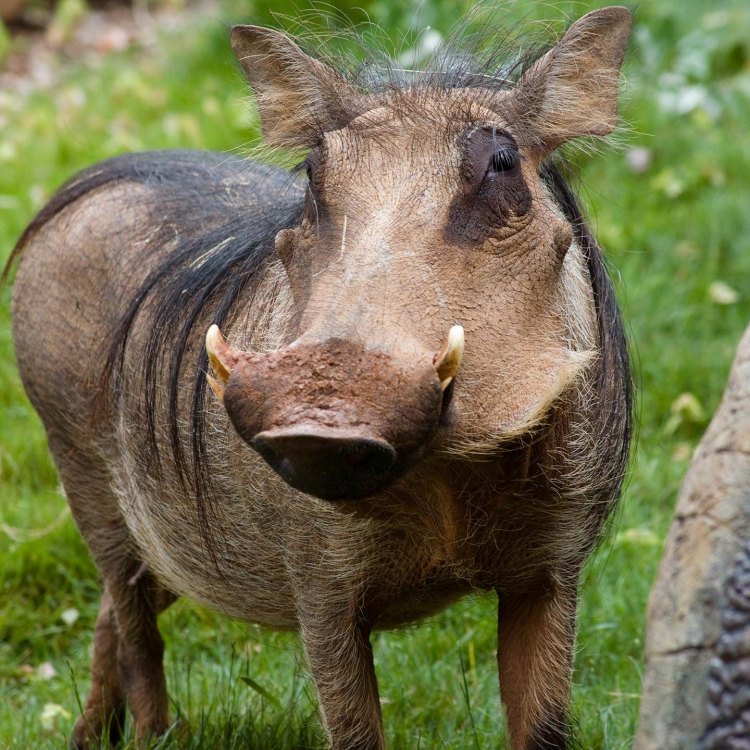
Warthog
- Adult Size: Up to 75 centimeters tall at the shoulder
- Average Lifespan: Up to 15 years in the wild
- Reproduction: Sexual
- Reproductive Behavior: Mating occurs throughout the year
- Sound or Call: Loud grunts and squeals
- Migration Pattern: Non-migratory
- Social Groups: Small family groups called sounders
- Behavior: Sociable and active during the day
- Threats: Habitat loss and hunting
- Conservation Status: Least Concern
- Impact on Ecosystem: Important for seed dispersal
- Human Use: Hunted for meat and their tusks
- Distinctive Features: Large tusks and wart-like bumps on their face
- Interesting Facts: They are excellent diggers and use burrows for protection
- Predator: Lions, leopards, hyenas, and crocodiles
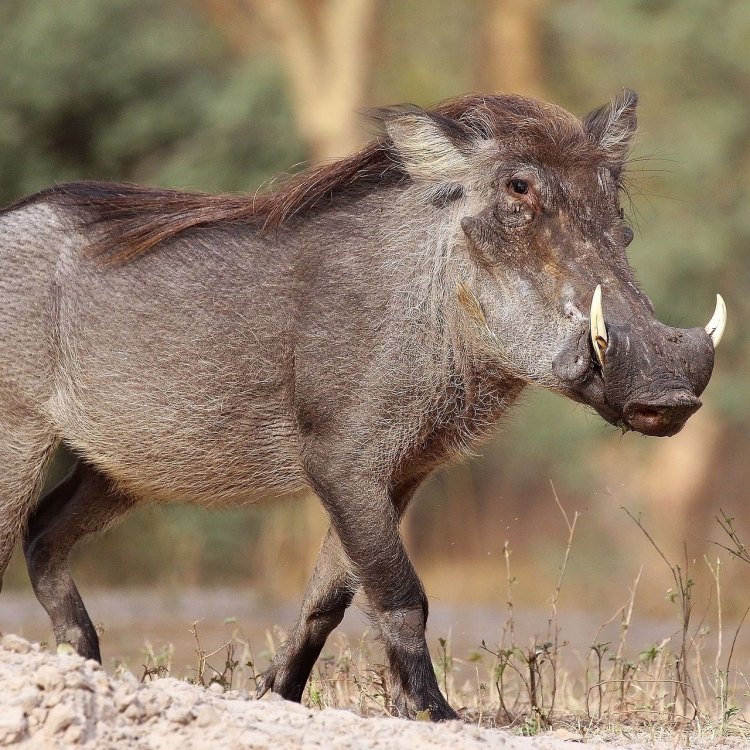
Phacochoerus africanus
The Mighty Warthog: An Iconic African Animal with a Surprising Purpose
When you think of African wildlife, images of majestic lions, towering giraffes, and graceful elephants may come to mind. But there is one species that often gets overlooked, despite its unique appearance and important role in the ecosystem – the warthog.Found throughout sub-Saharan Africa, the warthog may not be the most glamorous or well-known animal, but it is definitely one of the most fascinating. From its distinctive features to its surprising behavior, there is more to this creature than meets the eye PeaceOfAnimals.Com.
Meet the Warthog
The warthog, or Phacochoerus africanus, is a member of the pig family and is known for its unusual appearance. It can reach up to 75 centimeters tall at the shoulder, making it one of the largest wild pigs in the world.Its most distinctive feature is its large tusks that curve out and up from its mouth, giving it a fearsome appearance. These tusks are actually modified canine teeth and are used for defense and digging.
Aside from its tusks, the warthog has another defining characteristic – the wart-like bumps on its face. These bumps, also known as "warts," are actually thick pads of fat and are found on both males and females. They serve as a form of protection during fights with other warthogs.
Life in the Wild
Warthogs live in a wide range of habitats, from grasslands to savannas, and can be found in 28 countries across Africa. They are primarily diurnal, meaning they are active during the day, and are highly social animals White Faced Capuchin.In the wild, warthogs have an average lifespan of up to 15 years. They are sexual reproducers, and mating can occur throughout the year. During this time, males will compete for a female's attention, often engaging in aggressive fights.
One aspect that sets the warthog apart from other African animals is its non-migratory nature. While many animals in Africa migrate in search of food and water, warthogs stay in their home range and rely on their excellent digging abilities to find food and water.
Communication & Behavior
Warthogs may not be known for their vocalizations, but they are surprisingly expressive creatures. They use a variety of sounds, from loud grunts to high-pitched squeals, to communicate with other warthogs.As highly social animals, warthogs live in small family groups called sounders, consisting of a dominant male, several females, and their offspring. These groups are often seen foraging and wallowing in mud together, forming strong bonds within the group.
Despite their tough appearance, warthogs are actually very sociable animals and even engage in grooming behaviors. They use their rough tongues and sharp tusks to clean each other's coats and maintain hygiene within the group.
Threats to Survival
Like many other African animals, warthogs face numerous threats to their survival, primarily from habitat loss and hunting. As human populations grow and expand into traditional warthog habitats, their numbers and range have decreased.Warthogs are also hunted for their meat and their tusks, which can be used for ornamental purposes. While they are not considered a threatened species, it is important to monitor their populations and protect their habitats to ensure their continued survival.
The Warthog's Role in the Ecosystem
Despite its seemingly unassuming nature, the warthog plays a crucial role in the ecosystem. As an herbivore, it helps to control plant growth and maintains a balance within its habitat.But perhaps its most important role is as a seed disperser. Warthogs have an extensive diet, feeding on a variety of plants and fruits. As they travel and forage, they unknowingly spread plant seeds, helping to regenerate plant life and promote biodiversity.
Human Use & Conservation
While warthogs may not be seen as a "charismatic" or desirable species for conservation, they do play an important role in Africa's tourism industry. Many wildlife reserves and national parks offer visitors the chance to see these unique creatures in their natural habitat.Moreover, the warthog is classified as "Least Concern" on the IUCN Red List, meaning their populations are stable and not facing any immediate threat of extinction. However, continued conservation efforts are still necessary to protect their habitats and ensure their survival.
Fascinating Facts about Warthogs
Aside from their significance in the ecosystem, there are plenty of interesting facts about warthogs that make them stand out even more.Did you know that warthogs are excellent diggers? They use their strong snouts and powerful front legs to create burrows for shelter from predators. These burrows can be up to 2 meters deep and provide a safe haven for not only warthogs but other animals as well.
Another interesting fact is that, despite their tough exterior, warthogs are preyed upon by a variety of predators, including lions, leopards, hyenas, and even crocodiles. They use their speed and agility to evade these threats, but unfortunately, many still fall prey to these predators.
In Conclusion
The warthog may not receive as much attention as other African animals, but it is undoubtedly a fascinating species with a surprising purpose. From its unique appearance and behavior to its important role in the ecosystem, the warthog proves that even the most overlooked creatures have a crucial place in our world.As we continue to strive towards conservation and preservation of our planet's biodiversity, let us not forget the mighty warthog – a true African icon.
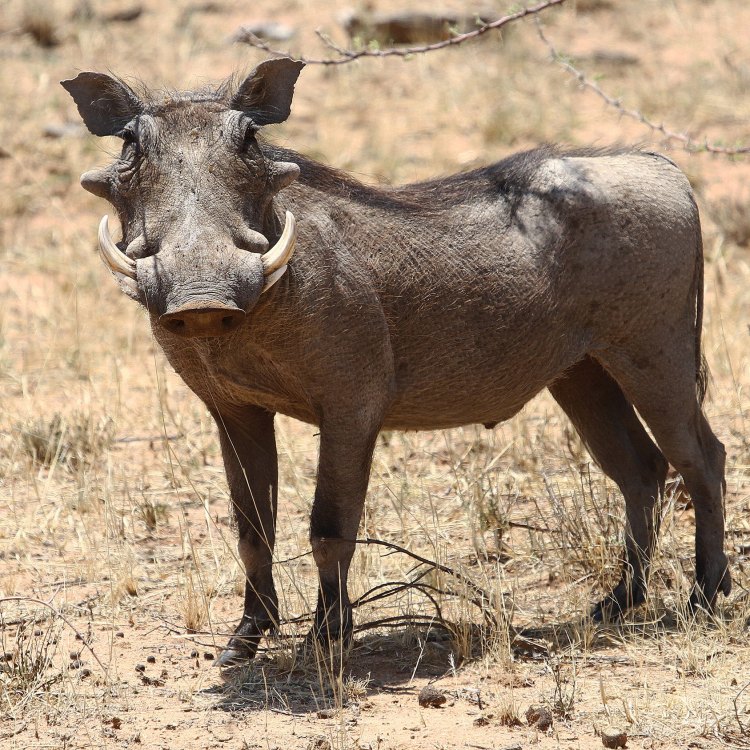
The Fascinating World of Warthogs: The Majestic Beauties of the African Savannas
Disclaimer: The content provided is for informational purposes only. We cannot guarantee the accuracy of the information on this page 100%. All information provided here may change without prior notice.


